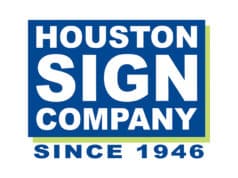
Whether you’re in a technological field or a non-profit organization, a robust proposal is instrumental in securing new contracts or funding. A strategic approach is necessary to develop an effective proposal, known as proposal management. In this blog post, let’s delve into this concept further, exploring essential steps for creating a winning proposal management strategy.
Understanding Proposal Management Strategy
Proposal management refers to creating, modifying, and presenting proposals. It’s a crucial aspect of business growth, as proposals help articulate a company’s potential solutions to prospective clients. Understanding the ins and outs of proposal management is the first step toward crafting a powerful business proposal.
A winning proposal management strategy requires effective planning, coordination, and execution skills. It also involves a thorough understanding of the customer’s needs and the ability to articulate how your solutions meet those needs. It’s about crafting a professional, clear, persuasive proposal that stands out.
Approaches to proposal management can vary immensely, depending on the nature of the business, customer preference, or the project’s complexity. A beneficial proposal management strategy is agile, flexible, and customizable to meet the unique requirements of each project.
Crafting a Captivating Executive Summary
Alt text: A person writing and looking at multiple computer screens implementing a proposal management strategy.
The executive summary is arguably one of the most critical parts of a proposal. It provides a brief overview of the entire proposal and highlights the critical points of your offer. The executive summary should be engaging and clear, persuading the reader to continue exploring the rest of your proposal.
A compelling executive summary should reveal the reason behind your proposal, the benefits for the customer, and why your solution is the best fit. This section should demonstrate understanding of the customer’s needs and reflect how your solution offers the best value proposition.
Your executive summary should be concise yet comprehensive. While it’s tempting to provide every detail about your proposal, remember that the purpose of an executive summary is to summarize the key points briefly. Essentially, you should be able to demonstrate the value of your proposal at a glance.
Incorporating Engaging and Persuasive Content
To make your content engaging, use storytelling techniques. Instead of merely stating facts, narrate a story that depicts a scenario where your solutions address the customer’s problem. It’s also helpful to include case studies and testimonials to build credibility and demonstrate your track record of successful implementations.
Persuasive content is what converts the reader into a customer. Be explicit about the benefits that the customer will derive from your solution. Also, highlight what sets your solution apart from the competitors. Remember, the ultimate goal is not just to showcase your services or products but to convince the customer that you’re their best option.
Emphasizing Visual Appeal in Your Proposals
While content is undoubtedly king, visuals play an important role in breaking up text and making your proposal more engaging. Graphics, diagrams, charts, and other visualization tools can help illustrate and reinforce your proposal’s key points. They also add an aesthetic element that makes the proposal more appealing to the eye.
Visual elements should not, however, overshadow the content of your proposal. Balance is key. Ensure that the visuals enhance the information and do not confuse the reader or distract from the core message.
In creating visual elements, pay attention to your brand’s image. Use colors, fonts, and styles that align with your brand identity. This helps build consistency and reinforces your brand in the client’s mind.
Finally, remember that quality matters. Grainy images, distorted graphics, and disproportional charts can mar the appearance of your proposal and possibly diminish the customer’s perception of your professionalism. Therefore, always aim for high-quality visuals.
Crafting a winning proposal management strategy involves understanding your customer’s needs, creating captivating summaries and engaging content, emphasizing visual appeal, and continuously reviewing and improving your strategies. Following these steps will help you create compelling proposals and set you ahead of competitors, ultimately leading to more business opportunities.








